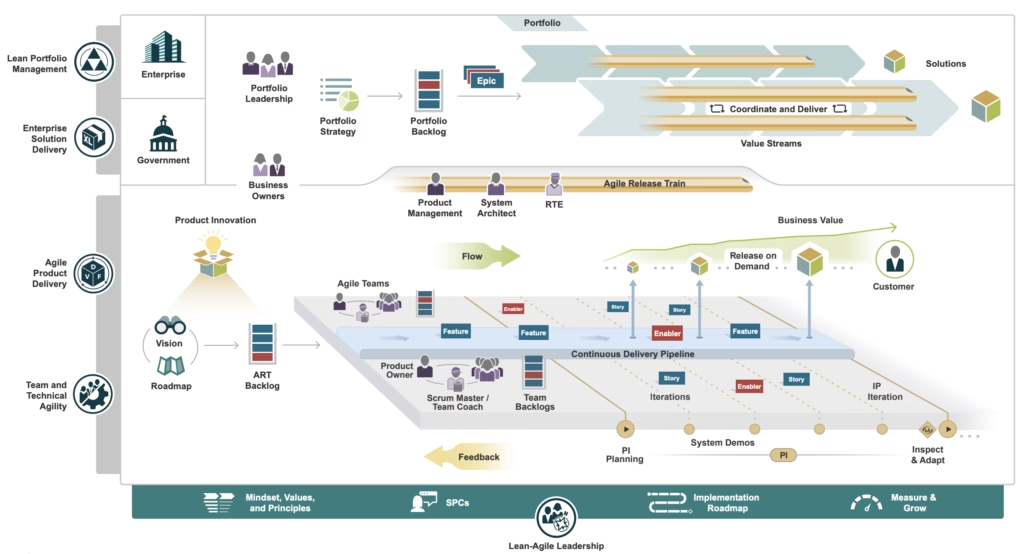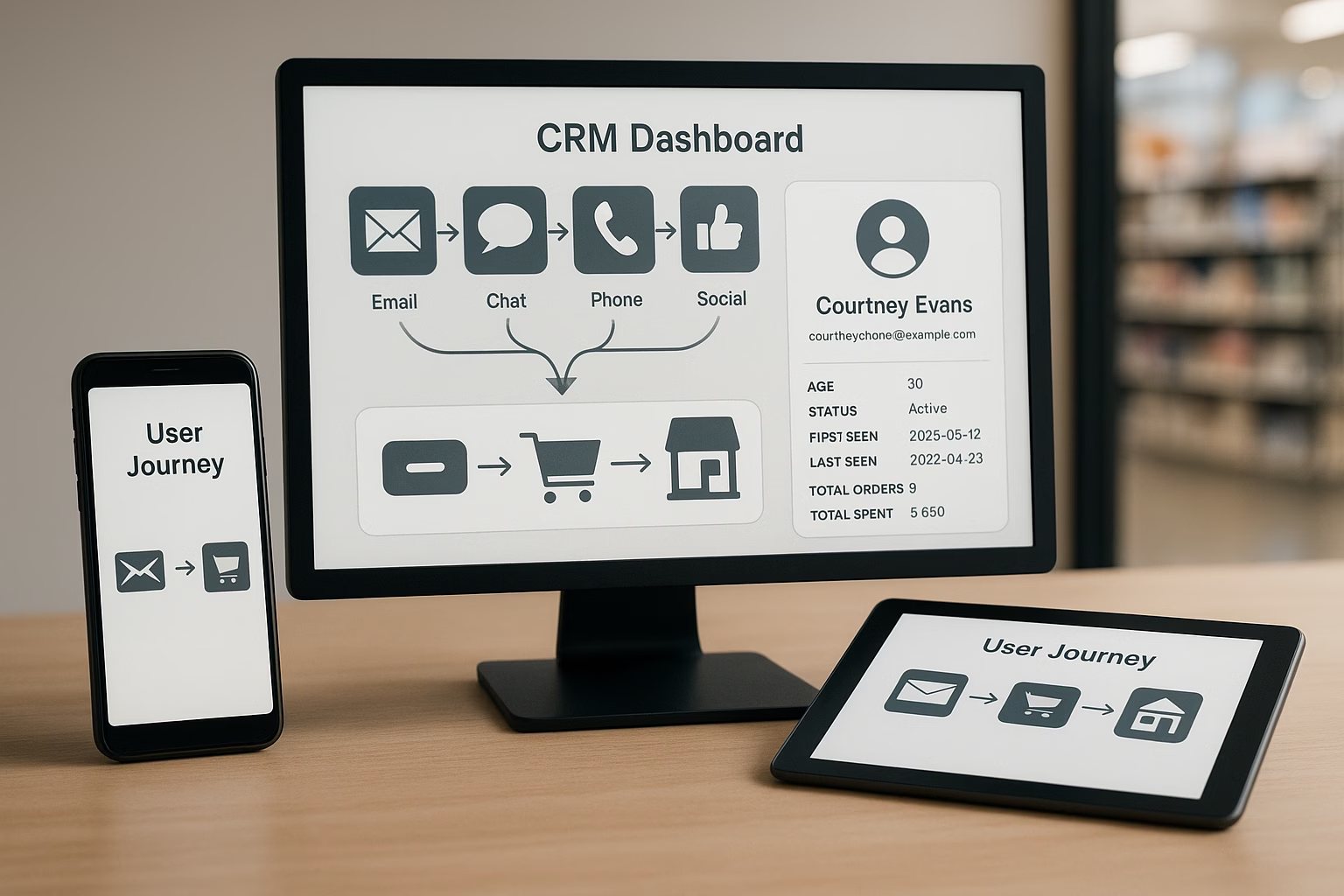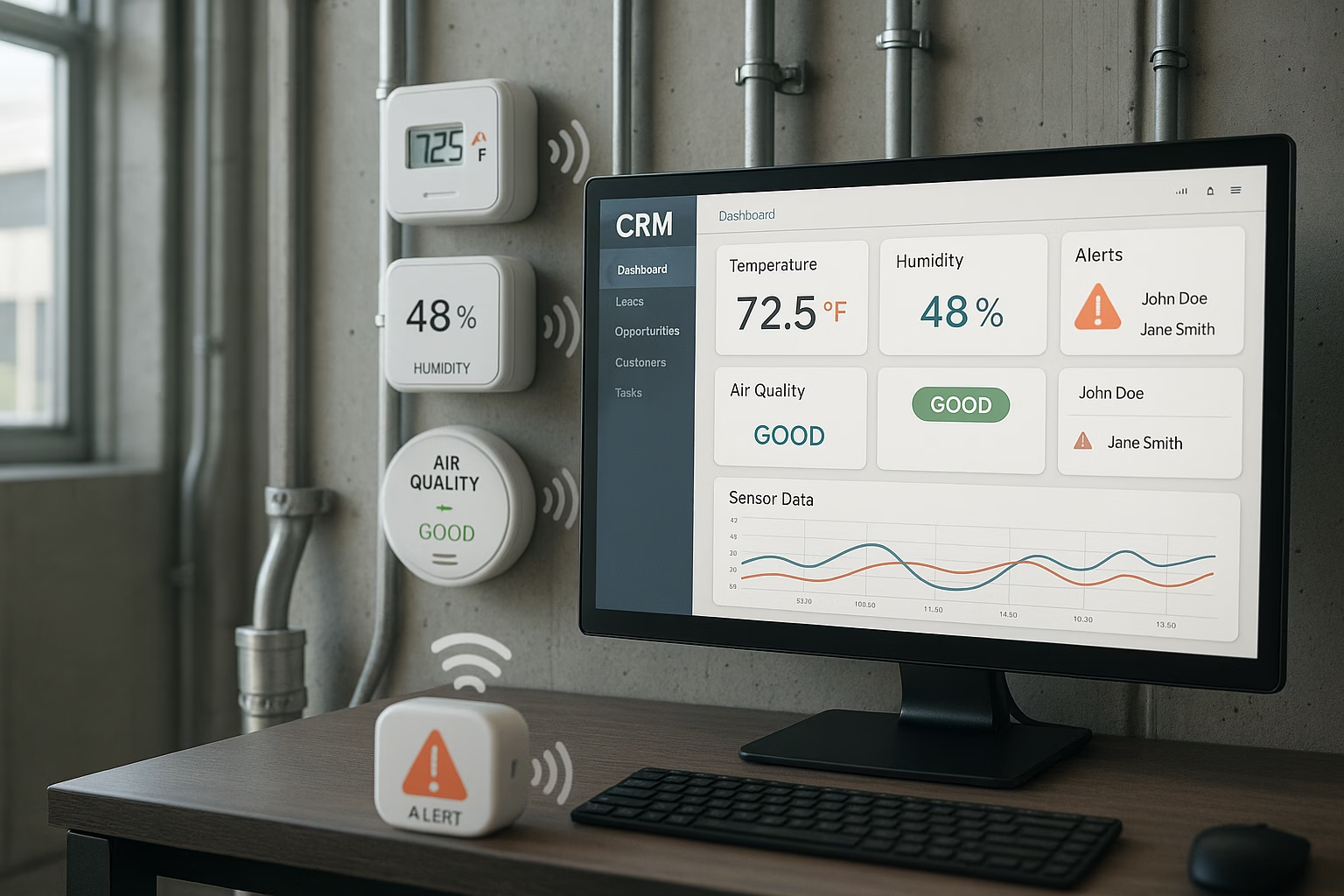Why transition to Scaled Agile?
Many organisations adopt Agile at the team level but struggle when attempting to scale. Processes become fragmented, alignment weakens, and delivery slows. Whether transitioning from traditional waterfall methods, ad-hoc Agile adoption, or a different scaled framework, the challenge lies in maintaining agility while ensuring coordination across teams. The Scaled Agile Framework (SAFe) provides a structured approach that enhances efficiency, fosters collaboration, and improves delivery speed. Organisations that embrace SAFe report up to 50% faster time-to-market and 35% higher productivity, but realising these benefits requires a well-executed transition.
Understanding SAFe and its core principles
SAFe aligns teams with strategic objectives while maintaining flexibility. It offers four configurations based on organisational needs:
- Essential SAFe: The foundation for team and Agile Release Train (ART) execution.
- Large Solution SAFe: Addresses complex systems requiring coordination across multiple ARTs.
- Portfolio SAFe: Connects development efforts with strategic business goals.
- Full SAFe: A comprehensive framework for large-scale agility.
At its core, SAFe is built upon ten Lean-Agile Principles, which guide decision-making and continuous improvement. These principles include taking an economic view, applying systems thinking, decentralising decision-making, and organising around value. They provide the foundation for agility at scale, ensuring alignment while allowing teams to operate autonomously.

Laying the groundwork for a successful transition
A successful transition starts with clear leadership commitment and an assessment of existing processes. Resistance often stems from uncertainty, conflicting priorities, or concerns over new responsibilities. Addressing these proactively through transparent communication and hands-on leadership helps smooth the transition. One of the core SAFe principles, “Assume Variability; Preserve Options,” is crucial here. Instead of locking into rigid plans, teams should remain adaptable, experimenting with different approaches and iterating based on the feedback they receive. Applying Systems Thinking ensures that the entire organisation (not just individual teams) moves towards agility in a structured way. Rather than attempting an organisation-wide shift immediately, a pilot ART can serve as a controlled test to refine the approach before scaling. Training and coaching play a crucial role in preparing key roles such as Release Train Engineers (RTEs), Product Owners, and Scrum Masters. Ensuring cross-functional collaboration from the start avoids silos and accelerates buy-in.
Implementing SAFe: Practical steps for success
Launching the first Agile Release Train requires careful execution. PI Planning sets priorities and ensures teams align on dependencies, making it a pivotal step. Leaders should actively participate in this process to reinforce its value and commitment to SAFe adoption. One of the key SAFe principles, “Visualise and Limit Work in Progress (WIP)”, is especially relevant here. By reducing batch sizes and managing queue lengths, teams can improve flow and increase efficiency. Applying Cadence and Synchronising with Cross-Domain Planning helps teams manage complexity by aligning their work in predictable cycles. Resistance to change is inevitable. Addressing concerns early, demonstrating quick wins, and maintaining an open feedback loop all contribute to higher engagement. As teams experience the benefits of improved predictability and delivery speed, adoption naturally gains momentum. Tracking progress is essential. Metrics such as lead time, flow efficiency, and Net Promoter Score (NPS) provide insights into agility improvements. Value stream mapping helps identify inefficiencies and areas for optimisation.
Scaling SAFe and ensuring continuous improvement
Once the foundation is established, the focus shifts to refinement and scaling. Regular retrospectives at all levels ensure ongoing optimisation. SAFe assessments help track maturity and guide further improvements. Another important principle, “Unlocking the Intrinsic Motivation of Knowledge Workers,” is critical at this stage. A successful SAFe transition depends on fostering a culture of trust, autonomy, and engagement, ensuring teams remain invested in continuous improvement. Organisations should also “Organise Around Value,” structuring teams and workflows to maximise customer impact rather than being constrained by legacy organisational hierarchies. Collaboration extends beyond individual teams. Cross-team planning, knowledge sharing, and leadership involvement sustain alignment. Organisations that embed a culture of agility, rather than treating SAFe as a one-time initiative, experience the most long-term benefits.
Making the transition work for your organisation
Transitioning to Scaled Agile is as much about frameworks and processes as it is about building a culture that values adaptability, collaboration, and efficiency. A clear strategy, engaged leadership, and a phased approach ensure your long-term success. At Sirocco, we specialise in helping organisations like yours navigate complex transformations with practical, hands-on expertise. If your team is considering SAFe adoption or looking to refine your agile approach, we can help you scale with confidence. Not only are all of our consultants SAFe certified, but we also have trainers on staff who can help you learn how to transition to Scaled Agile (for local companies, we offer our offices to facilitate training). Start a conversation today:










